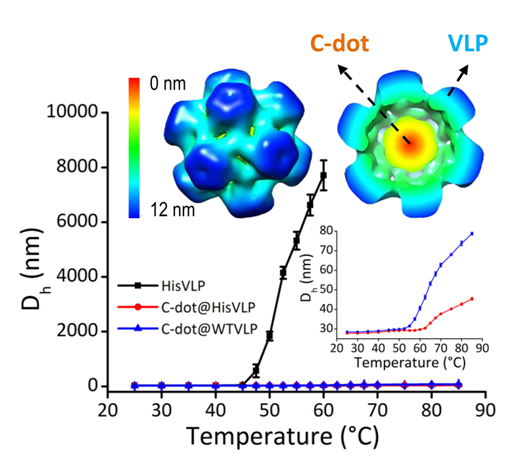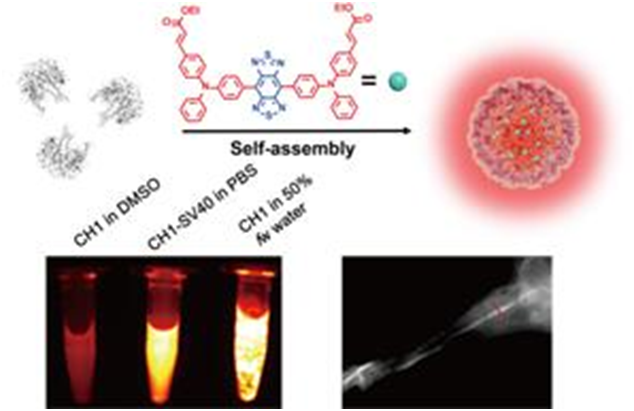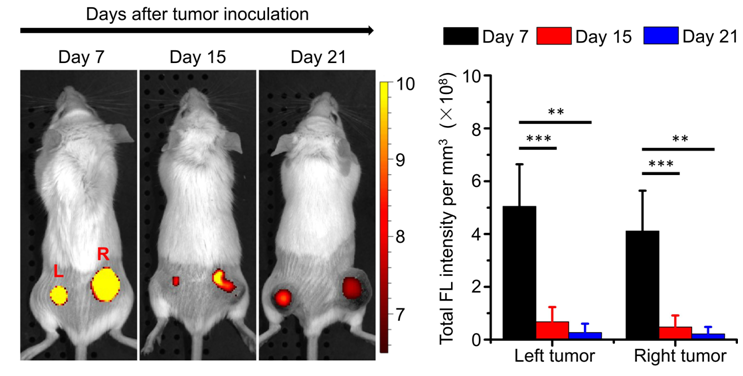Wuhan virus Institute has made a series of progress in virus nanobiology cross research
Virus like particle (VLP) is a typical assembly of biological macromolecules, which is a perfect unity of delicate structure and specific functions. VLP usually keeps the virus s nano size, immunogenicity, cell recognition and other characteristics. From the perspective of materials science, VLP has many advantages, such as good biocompatibility, structural addressability, controllable assembly depolymerization and so on. VLP has been widely used in biomedicine and nanotechnology due to its abundant loading space in the inner cavity and outer surface, which can hold various functional components. Recently, Li Feng research group of Wuhan Institute of Virology, Chinese Academy of Sciences / biosafety Science Center and its collaborators have made a series of progress in enhancing the material properties of VLP, new drug packaging, targeted delivery, etc.
The function of VLP based materials or devices (such as drug delivery, disease diagnosis, nano confinement catalysis, etc.) largely depends on the structural stability of VLP, while the stability of natural VLP can not meet the harsh requirements of practical application. Li Feng s research group and collaborators, through packaging carbon dots (c-dots) in simian virus 40 (SV40) VLP, significantly improved the assembly yield, stability (pH, heat, enzyme resistance, hardness) and sequence plasticity of SV40 VLP (Fig. 1); It is found that the extensive interface interaction between c-dot and VLP cavity is the reason for the above performance enhancement. The hybrid assembly system formed by SV40 VLP and c-dot provides a robust technical platform for the construction of new vaccines, multifunctional tumor diagnosis and treatment devices and other applications. This achievement was recently published in small (DOI: 10.1002 / small. 202101717). Zhang Wenjing, a doctoral student of Wuhan Institute of Virology, is the first author of the paper. Li Feng, Cao Sheng and Ge jiechao are the co corresponding authors of the paper.

Figure 1. Packaging c-dot to improve the stability of SV40 VLP
As a novel in vivo fluorescent imaging probe, organic fluorescent nanoparticles in the near infrared region II have the properties of twisted intramolecular charge transfer (TICT) and aggregation induced emission (AIE), However, the organic nanoparticles prepared by the existing technology have some problems, such as difficult to control the particle size accurately, poor stability and biocompatibility. In order to solve this problem, Li Feng and his collaborators used heterozygous assembly strategy to package tict-aie molecule (ch1) in the inner cavity of SV40 VLP to construct ch1-sv40 with uniform particle size (about 21 nm), high biocompatibility and photostability, and the fluorescence quantum yield was up to 13.03%; Using ch1-sv40, the tumor resection was successfully performed under the guidance of angiography and image. This work provides a new nanoprobe for biomedical near infrared II imaging (Fig. 2) and a new idea for controllable construction of organic nanoparticles. Relevant results were published in ACS appl. Mater. Interfaces (DOI: 10.1021 / acsami. 1c02691). Dr. min Xuehong of Central South University for nationalities, Dr. Zhang Juan of Wuhan Institute of Virology and Mr. Li Runhao of Central South University for nationalities are the co first authors of this paper. Researcher Li Feng of Wuhan Institute of Virology and Professor Sun Yue of Central South University for nationalities are the co corresponding authors of this paper.

Figure 2. SV40 VLP packaging ch1 for in vivo angiography
VLP is an ideal nano platform for the development of tumor targeted diagnosis and treatment technology. Efficient tumor targeting has always been a major challenge in this field. In the past, people usually focus on the design of nanoparticles to improve the tumor targeting efficiency, but the influence of tumor microenvironment characteristics on the targeting efficiency has received little attention. Li Feng s team used phage P22 VLP as a model vector to explore the impact of tumor progression on targeting efficiency by using colon cancer mouse model. It was found that the tumor enrichment efficiency of P22 VLP was negatively correlated with tumor progression (Fig. 3), and P22 VLP targeted to tumor was mainly engulfed by tumor associated macrophages (TAM) in tumor neovascularization. This study provides a new perspective for understanding the difference of therapeutic effects of tumor targeted drugs. The enrichment of P22 VLP in Tam can be used to develop cancer immunotherapy strategies targeting Tam. The results were recently published in nanoscale (DOI: 10.1039/d1nr01619a) and included in the 2021 nanoscale hot article collection. Li Feng, a researcher of Wuhan Institute of Virology, and Zhang Juan, a doctoral student, are the corresponding author and the first author respectively.

Figure 3. The tumor targeted enrichment efficiency of P22 VLP is negatively correlated with tumor progression
The above research is supported by general projects of National Natural Science Foundation of China, national key R & D plan, key deployment projects of Chinese Academy of Sciences, application foundation frontier project of Wuhan Science and technology plan, Wuhan Huanghe talent science and technology plan, etc.
This information is from the Internet for academic exchange only. If there is any infringement, please contact us to delete it immediately
18915694570
Previous: Multifunctional nano-d
Next: Nature communications


